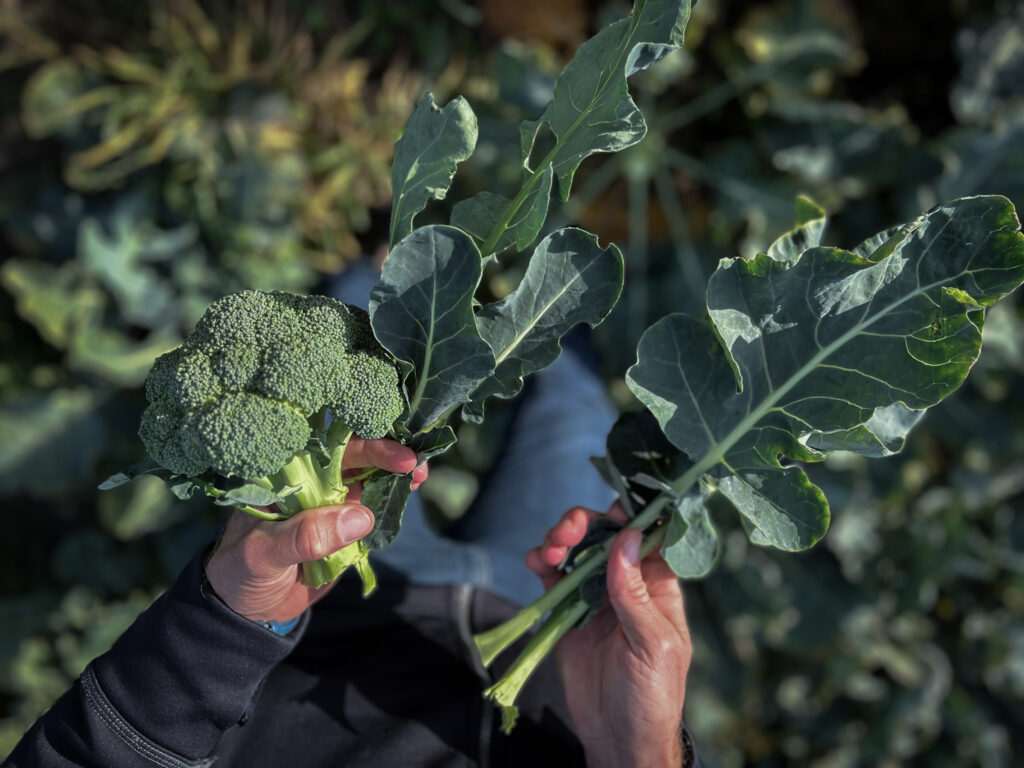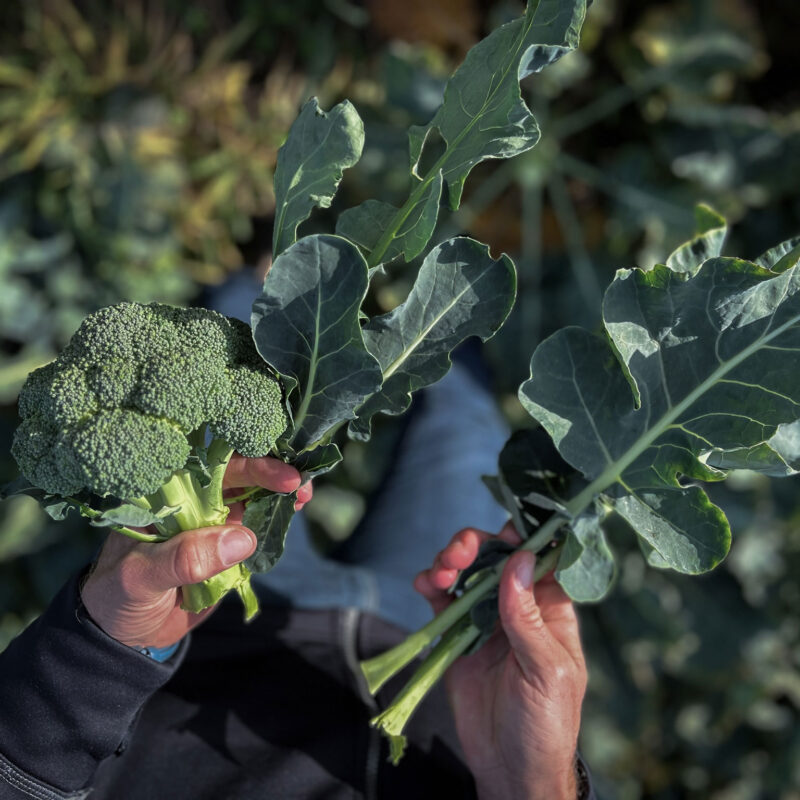“Broccoli Sausage” – An Innovation from the Processing Stage
2025.09.28
Just in time for the International Day of Awareness of Food Loss and Waste on September 29, pea patties with broccoli leaves – leaves that otherwise would have gone to waste – are being launched. The idea comes from the processing stage in the project The Whole Plant – More Harvest Becomes More Food. For the second year in a row, broccoli leaves are being turned into ingredients for delicious dishes instead of decomposing in the field.

The "Broccoli Sausage" is a good example of how important the processing stage is in product development. The idea was born at Grönsakshallen Syd in Hässleholm.
From Waste to Resource: A Holistic Approach to Swedish Vegetables
It is common for the leaves and stalks of Swedish-grown, nutrient-rich vegetables to be discarded. This biomass is left in the field or thrown away because it is difficult to sell. Making use of the entire plant and turning waste into a resource is at the core of the Whole Plant project, which Axfoundation runs in collaboration with partners across the entire value chain.
Broccoli is a good example of an underutilized resource. The familiar florets found on store shelves make up only about 15 percent of the plant’s biomass. The equally nutritious leaves account for nearly half of the total biomass. This means there is great potential to significantly increase the yield if some of the leaves are also harvested.
But even though the leaves are just as nutritious as the florets, they are fibrous, and it isn’t obvious how they can best be used. The idea for a solution was sparked at the crucial middle link in the chain from farm to fork – Grönsakshallen Syd in Hässleholm.
But let’s rewind.
How Do You Actually Make Broccoli Mash?
In 2024, Axfoundation gathered stakeholders from across the value chain to lay the foundation for a large-scale test of how to make use of broccoli leaves. Project partner Sevan was interested in mixing broccoli mash into falafel and yellow pea patties, but it was unclear how to process the broccoli leaves on a large scale.
– We couldn’t find anyone who could mix, heat, cool down, and then package the leaves into a mash, says Veronica Öhrvik, Axfoundation’s project manager for the Whole Plant project.
The problem was raised at an innovation meeting at Torsåker Farm. One of the participants, Anton Wallin, business and product developer at Grönsakshallen Syd, recalled how the company packages blended rhubarb into sausage-like plastic casings.
– I thought, if it works with rhubarb, which is quite tough and fibrous, it should work with broccoli too. It’s the same machines used for both meat and vegetarian sausages – the only difference is the packaging, says Anton Wallin.
Back at work, Anton shared the idea with his colleagues. They immediately responded positively. The critical factor was ensuring the heating process would meet requirements for color and food safety, while also satisfying customer Sevan’s needs.
– Sevan wanted us to blanch first and then chop. But we reversed the order – we chopped the raw leaves, packed them, and then heated them afterward. And it worked well, says Anton Wallin.
The broccoli mash was tested and approved. Sevan was satisfied, and production could begin. The chopped broccoli leaves became an ingredient in yellow pea patties, which were sold frozen through Martin & Servera – and sold out quickly.

The broccoli florets you see on the store shelf make up only about 15 percent of the plant’s biomass. The equally nutritious leaves account for nearly half of the total biomass.
Innovation at Every Step – From Field to Finished Dish
Now it’s harvest season again, and the success is being repeated. Anton Wallin at Grönsakshallen Syd considers broccoli mash a practical product and emphasizes the importance of making use of all by-products.
– We’re already buying broccoli, so it’s extremely important to use what’s there – especially since the leaves are so nutritious. The challenge is getting customers to see the value. It’s about communicating correctly, not saying it’s discarded leaves, but presenting it as tasty broccoli leaves, says Anton Wallin.
Veronica Öhrvik at Axfoundation agrees, adding that pricing is key if the innovation is to scale and last over time.
– It would make more sense to talk about cost per nutrient, not just cost per unit, says Veronica.
The “broccoli sausage” is a good example of how important the processing stage is in product development. Innovation doesn’t always happen in the kitchen among chefs and sensory experts. More often, it happens in the steps between primary producer and end consumer – where raw materials are handled, treated, processed, and packaged.
– What we do in the kitchen at Torsåker Farm is only one part of what’s needed to make an innovation take off. Most of it is about connecting the entire value chain so that innovation also happens there, says Veronica Öhrvik.
For Grönsakshallen Syd, integrating innovation into daily work is natural. It’s a pragmatic effort aimed at solving problems, and Anton Wallin is quick to stress that it’s not about individual credit.
– Most of it is teamwork.
About The Whole Plant – More Harvest Becomes More Food
In the project The Whole Plant – More Harvest Becomes More Food, partners from across the value chain collaborate to make underutilized by-products more accessible to the food industry. The method for processing broccoli leaves was optimized by Grönsakshallen Syd in fall 2024. Patties made from Swedish yellow peas and broccoli leaves have been developed and are produced by Sevan and sold by Martin & Servera. After this year’s broccoli season, frozen chopped broccoli leaves will also be sold directly by Martin & Servera.
























































